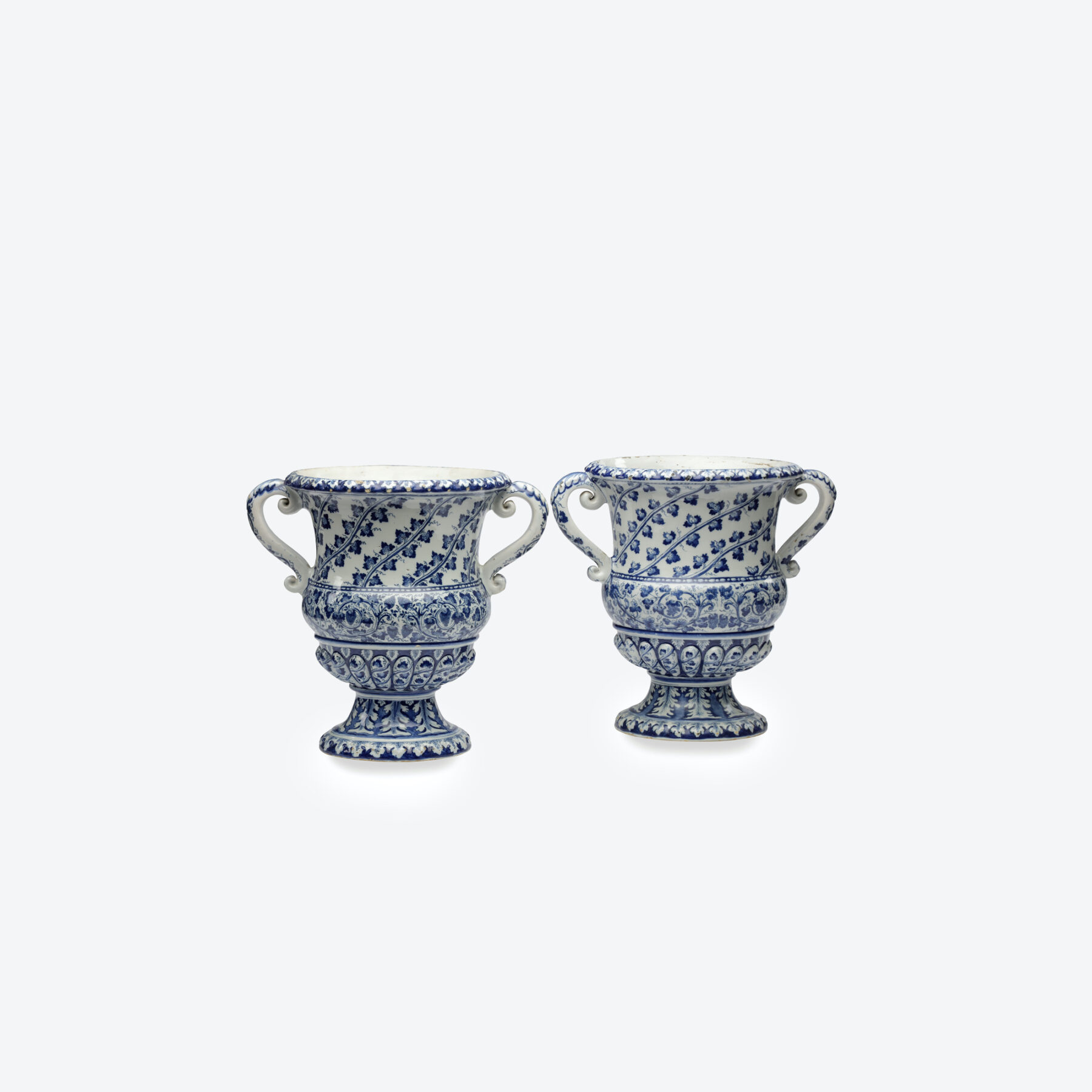Delft tulip vases
Delft, 1701-1720
Marked: PAK, for Pieter Adriaen Kocks, factory ‘De Grieksche A’
An object that was specially developed in Delft for the display of flowers during the period of William and Mary is the fan-shaped flat vase. This model appears to have evolved by combining four separate narrow vases, and adding a fifth spout in the center. At least two such vases were part of the collection of Queen Mary, as is known from the discovery of the fragments of ‘twee platte bloemflesjes’ (‘two flat flower vases’) in her ‘keldertje’ at Het Loo.
Bekijk de collectie



